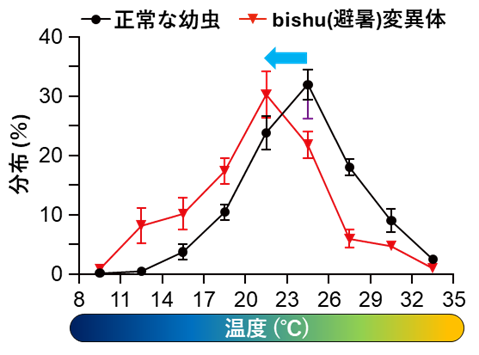2025-05-25 コロンビア大学
<関連情報>
- https://www.cuimc.columbia.edu/news/sternberg-evocast-gene-editor
- https://www.science.org/doi/10.1126/science.adt5199
実験室で開発されたCRISPR関連トランスポザーゼを用いたヒト細胞へのプログラム可能な遺伝子挿入 Programmable gene insertion in human cells with a laboratory-evolved CRISPR-associated transposase
Isaac P. Witte, George D. Lampe, Simon Eitzinger, Shannon M. Miller, […] , and David R. Liu
Science Published:15 May 2025
DOI:https://doi.org/10.1126/science.adt5199
Editor’s summary
The ability to install large DNA sequences into specified locations in the human genome has far-reaching implications, including paving the way for single-drug treatments of mutationally diverse loss-of-function genetic diseases. CRISPR-associated transposases (CASTs) are naturally occurring systems that support RNA-programmable insertion of gene-sized DNA but have shown minimal activity in human cells. Witte et al. developed a continuous evolution platform to improve CAST activity, yielding an evolved CAST with more than 200-fold increased activity in human cells. This enzyme enables efficient gene integration across a variety of therapeutically relevant genomic sites in multiple human cell types, representing a versatile new platform for mammalian cell genome editing. —Di Jiang
Structured Abstract
INTRODUCTION
The efficient insertion of gene-sized DNA sequences at user-specified genomic sites is a long-standing goal in genome editing. Although current editing methods can correct most disease-causing mutations, the genetic diversity underlying many disorders will require the design and regulatory approval of many mutation-specific strategies—substantially limiting the number of patients who can benefit from therapeutic genome editing. Programmed genomic integration of a healthy gene copy could offer a mutation-agnostic treatment for loss-of-function genetic diseases. Additionally, targeted gene integration enables other applications, including cancer immunotherapies, transgenic cell and animal models for basic research, and metabolic engineering.
RATIONALE
CRISPR-associated transposases (CASTs) are naturally occurring bacterial systems that exploit nuclease-deficient CRISPR machinery to integrate DNA at genomic locations specified by guide RNAs. CASTs offer many attractive qualities as a genome editing tool, including facile programmability, compatibility with multi-kilobase-scale DNA cargo, and avoidance of genomic double-strand DNA breaks. Despite this promise, wild-type CASTs reported to date support minimal integration in human cells (often ≤0.1% of treated cells). We reasoned that this low efficiency may stem from naturally evolved, suboptimal transposition catalysis that mitigates mobilization-induced fitness cost to the host. To enable efficient CAST integration in human cells, we developed a phage-assisted continuous evolution (PACE) system that rapidly evolves CAST variants capable of fast targeted transposition and applied CAST-PACE to a prototypical Type I-F CAST system from Pseudoalteromonas.
RESULTS
We linked on-target DNA integration in Escherichia coli to the propagation of continuously mutating phage genomes encoding evolving CAST components. After hundreds of generations of continuous selection, replication, and mutation in which the resulting phage survived an overall 10322-fold dilution, we generated an evolved variant of the CAST transposase protein TnsB that mediated >200-fold improved integration activity in human cells. The evolved TnsB contains 10 activity-enhancing mutations located throughout the protein, which likely modulate several distinct interactions with other CAST components. Notably, the evolved TnsB mediated efficient integration activity in human cells without requiring codelivery of the bacterial CAST accessory protein, ClpX, which is cytotoxic. We combined this evolved TnsB with other PACE-evolved and rationally engineered CAST components to yield evoCAST, a system optimized for human-cell integration activity. EvoCAST achieved 10 to 30% integration efficiencies across 14 genomic targets in human cells, representing a 420-fold average improvement over wild-type CAST. EvoCAST supported large DNA cargoes >10 kb and mediated the integration of several therapeutic payloads at disease-relevant genomic sites, including safe harbor loci, sites for cancer immunotherapy engineering, and genes implicated in loss-of-function genetic diseases. EvoCAST also performed targeted integration in multiple human cell types, including primary human fibroblasts, and exhibited high product purity, with no detected insertions and deletions (indels), predominantly unidirectional cargo insertion, single–base pair precision of integration, and low levels of off-target integration.
CONCLUSION
This work establishes CAST as a powerful platform technology for efficient, RNA-guided gene integration in human cells. The advantages of evoCAST—including its simple programmability, single-step integration mechanism, and avoidance of genomic double-strand breaks—make it well-suited for many applications in the life sciences and therapeutics, including the capability to address genetically diverse patient populations through a single editing agent. The CAST PACE system developed in this work also provides a strategy for improving the properties of other naturally occurring CASTs toward their use for efficient human-cell genome editing.
OPEN IN VIEWER
PACE-evolved CASTs mediate efficient, programmable gene integration in human cells.
CASTs exploit a nuclease-deficient CRISPR-Cas system to recruit a transposase complex that catalyzes DNA integration (top left). We developed a PACE selection that links integration to propagation of phage that encode transposase components (top right), yielding an evolved CAST that supports >200-fold improved integration in human cells (bottom left). EvoCAST enables efficient and targeted integration of therapeutically relevant genes at many genomic loci (bottom right), paving the way for mutation-agnostic therapies for loss-of-function genetic diseases.
Abstract
Programmable gene integration in human cells has the potential to enable mutation-agnostic treatments for loss-of-function genetic diseases and facilitate many applications in the life sciences. CRISPR-associated transposases (CASTs) catalyze RNA-guided DNA integration but thus far demonstrate minimal activity in human cells. Using phage-assisted continuous evolution (PACE), we generated CAST variants with >200-fold average improved integration activity. The evolved CAST system (evoCAST) achieves ~10 to 30% integration efficiencies of kilobase-size DNA cargoes in human cells across 14 tested genomic target sites, including safe harbor loci, sites used for immunotherapy, and genes implicated in loss-of-function diseases, with undetected indels and low levels of off-target integration. Collectively, our findings establish a platform for the laboratory evolution of CASTs and advance a versatile system for programmable gene integration in living systems.


